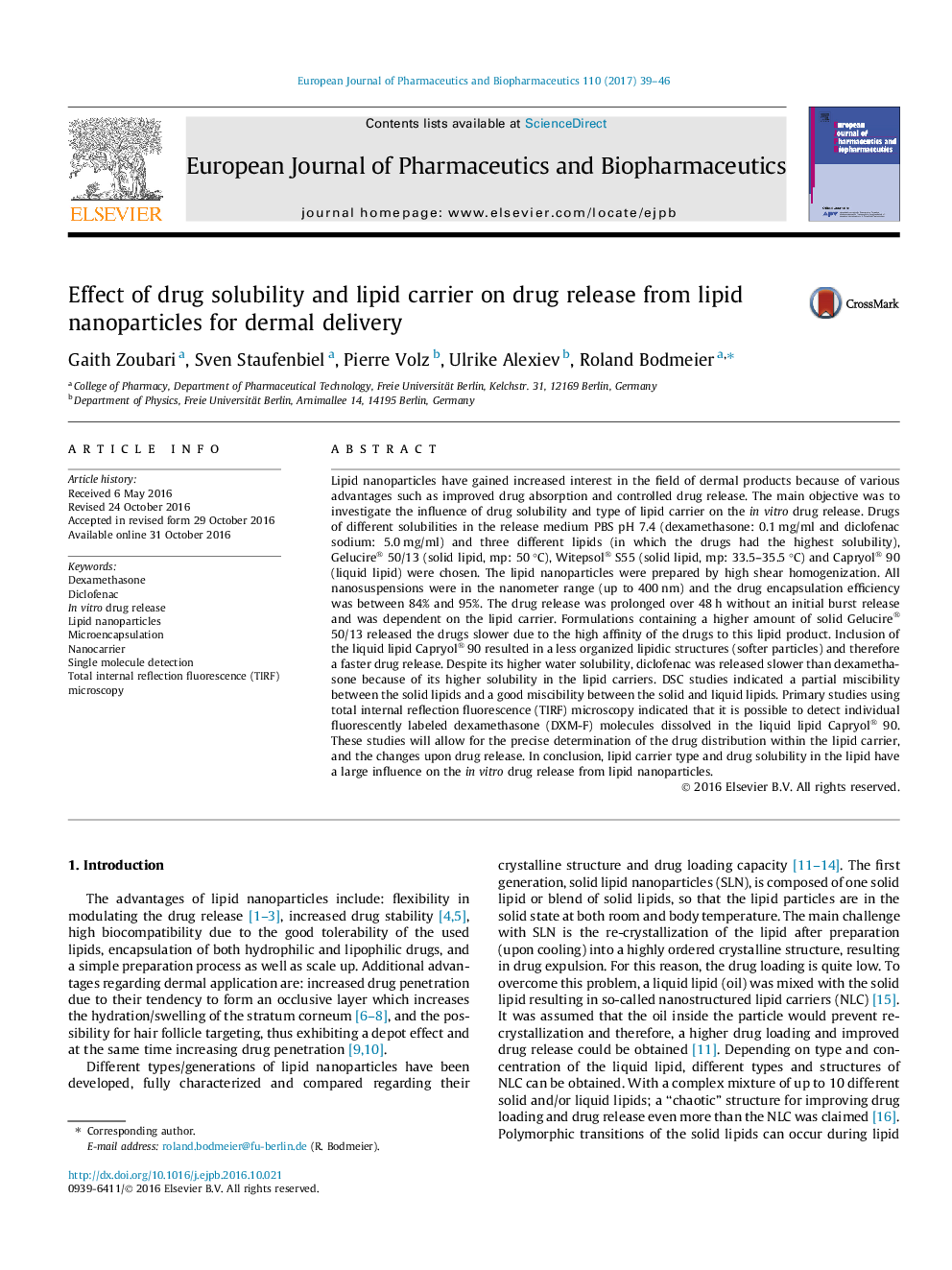| کد مقاله | کد نشریه | سال انتشار | مقاله انگلیسی | نسخه تمام متن |
|---|---|---|---|---|
| 5521479 | 1545313 | 2017 | 8 صفحه PDF | دانلود رایگان |
Lipid nanoparticles have gained increased interest in the field of dermal products because of various advantages such as improved drug absorption and controlled drug release. The main objective was to investigate the influence of drug solubility and type of lipid carrier on the in vitro drug release. Drugs of different solubilities in the release medium PBS pH 7.4 (dexamethasone: 0.1 mg/ml and diclofenac sodium: 5.0 mg/ml) and three different lipids (in which the drugs had the highest solubility), Gelucire® 50/13 (solid lipid, mp: 50 °C), Witepsol® S55 (solid lipid, mp: 33.5-35.5 °C) and Capryol® 90 (liquid lipid) were chosen. The lipid nanoparticles were prepared by high shear homogenization. All nanosuspensions were in the nanometer range (up to 400 nm) and the drug encapsulation efficiency was between 84% and 95%. The drug release was prolonged over 48 h without an initial burst release and was dependent on the lipid carrier. Formulations containing a higher amount of solid Gelucire® 50/13 released the drugs slower due to the high affinity of the drugs to this lipid product. Inclusion of the liquid lipid Capryol® 90 resulted in a less organized lipidic structures (softer particles) and therefore a faster drug release. Despite its higher water solubility, diclofenac was released slower than dexamethasone because of its higher solubility in the lipid carriers. DSC studies indicated a partial miscibility between the solid lipids and a good miscibility between the solid and liquid lipids. Primary studies using total internal reflection fluorescence (TIRF) microscopy indicated that it is possible to detect individual fluorescently labeled dexamethasone (DXM-F) molecules dissolved in the liquid lipid Capryol® 90. These studies will allow for the precise determination of the drug distribution within the lipid carrier, and the changes upon drug release. In conclusion, lipid carrier type and drug solubility in the lipid have a large influence on the in vitro drug release from lipid nanoparticles.
118
Journal: European Journal of Pharmaceutics and Biopharmaceutics - Volume 110, January 2017, Pages 39-46
